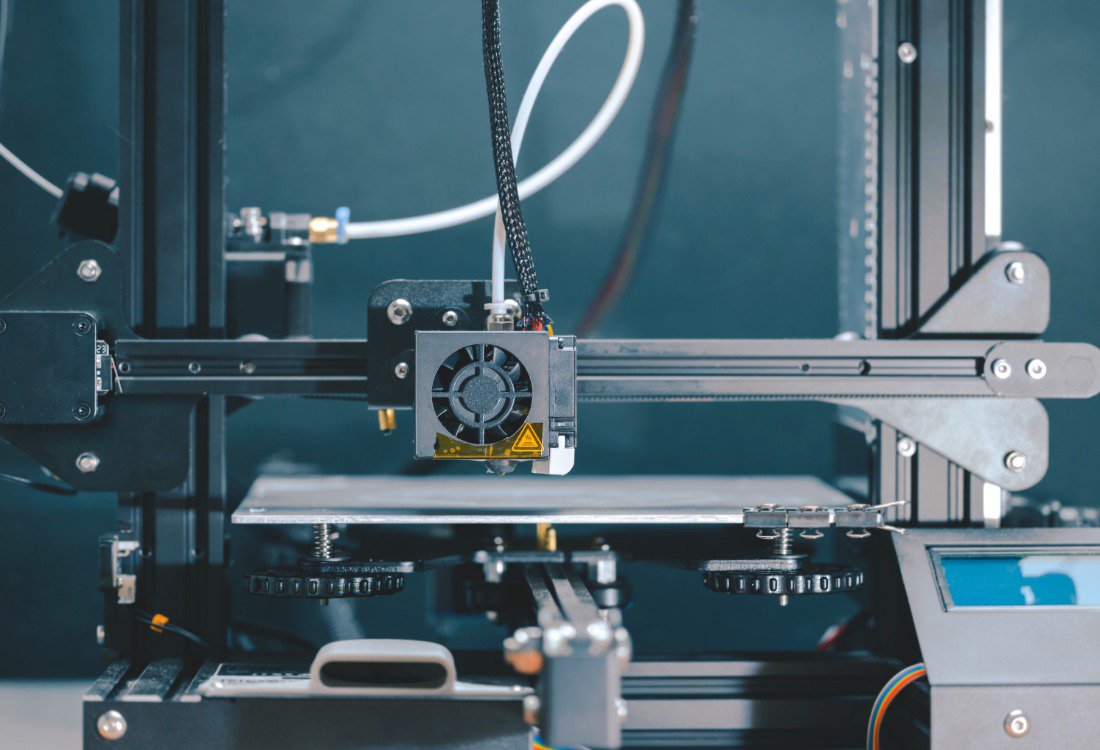Have you ever wished you could simply print off a copy of a hydraulic component rather than wait for one to arrive? Us too. While this situation is still some way in the future, rapid advancements in 3D printing technology, or additive manufacturing, over the past few years, have enabled the creation of lightweight, high-performance hydraulic parts that push the boundaries of traditional engineering. These 3D-printed components are capable of handling immense loads with precision and efficiency.

In this article, we’ll look at the intersection between 3D printing and hydraulic components and the exciting new applications for various fluid power systems.
Additive Manufacturing, Subtractive Manufacturing, And 3D printing
Traditionally, fluid power components are created using subtractive manufacturing. Valves, filters, and cylinders are engineered by subtracting material from a block or sheet using milling, forging, casting, and other processes. Despite radical improvements in CNC and computer-guided precision engineering, subtractive manufacturing techniques can still be wasteful of materials, incur high costs, and have inherent limitations in design complexity. 3D printing differs from traditional manufacturing is that it is an additive process, building components layer by layer from a digital model. This shift increases design flexibility and opens up new opportunities for hydraulic component engineering in several important areas:
1. Lightweight Design
One of the biggest benefits of 3D printing is the ability to produce lightweight components without sacrificing performance or durability. Many industrial-grade 3D printers are now capable of using advanced materials, such as high-strength polymers, composites, and titanium alloys, enabling engineers to reduce the weight of their hydraulic components. These lightweight components become more suitable for compact and mobile fluid power systems in which energy efficiency and payload capacity are critical concerns. Many of the materials used in 3D printing also have superior corrosion resistance and thermal stability compared to traditional materials, increasing their applications in austere environments.
2. Complexity And Design
Additive manufacturing unlocks various design possibilities that traditional methods cannot achieve. For example, complex fluid channels and optimised internal structures can all be easily produced using 3D printing, at a fraction of the cost of subtractive methods. These innovative designs can enhance fluid flow dynamics, reduced pressure losses, optimise energy consumption, and reduce power requirements. Some design engineers are taking a ‘bionic design’ approach to 3D printed hydraulic components, inspired by structures found in nature. Through computer-aided topology optimisation, engineers can now create parts that are not only lighter and stronger but use less material in the process, bringing designs from concept to production with unprecedented precision.
3. Performance Benefits
3D printing therefore aligns with the long-term trend in hydraulic engineering towards lighter and more complex parts. There are also performance and production benefits, in particular the way that 3D printing enables rapid prototyping and high levels of personalisation, with a shorter lead time than traditional processes. For instance, engineers can test multiple versions of a design in shorter time to find the best option, delivering faster innovation cycles. In fast moving industries with unique performance requirements, such as subsea operations (e.g. cable laying), mining, and renewable power, this is particularly beneficial. In the near future, custom manifolds may be printed to match specific system configurations to, for instance, provide leak free performance without as much need for connections and weld joints. Additionally, the precise accuracy of 3D printing can enhance system integrity and extend the lifespan of components. 3D printed precision filtration systems, for example, could be optimised to keep your hydraulic fluid cleaner for a longer time, reducing maintenance cycles and damage to internal mechanisms.
Find Out More
At Hydrastar, we take advantage of the latest trends in hydraulic engineering to offer our customers the widest selection of components and systems for industrial and commercial applications. To find out more, please get in touch with one of our experienced team today by clicking here.


